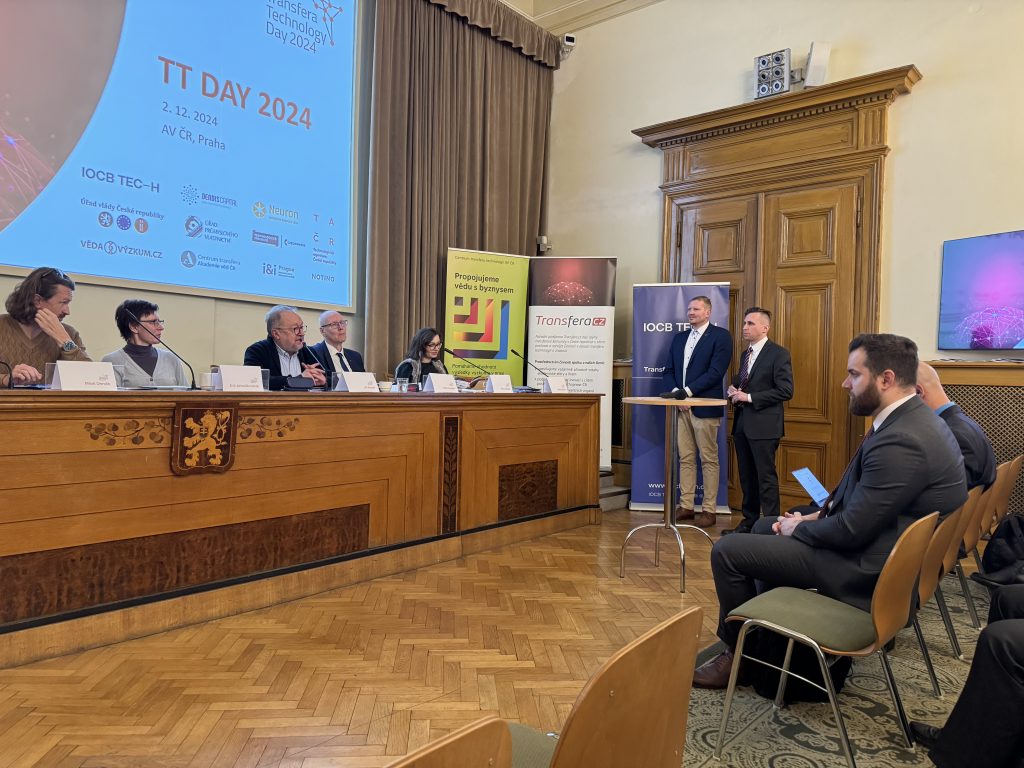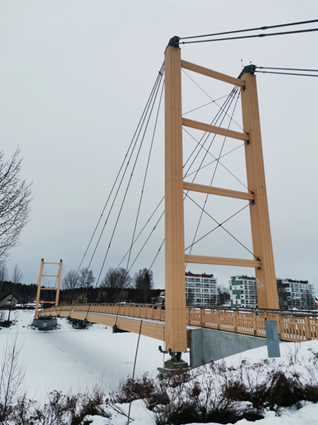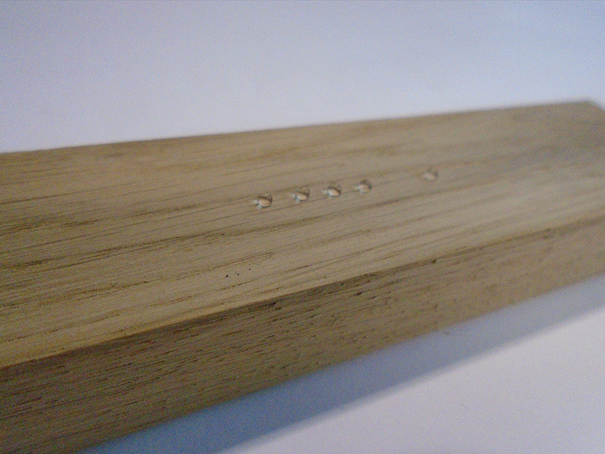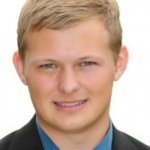
Knowledge transfer of developed coating system from university laboratories to manufacturers
Abstract
INTRODUCTION
As a result of global climate change, the structure of forest stands in Central Europe is also changing, with spruce monocultures gradually changing in favor of forest stands with a content of mixed deciduous tree species. However, the processing industry is long-term in terms of capital, product, and technology for the processing of coniferous species of wood (Bozzolan et al., 2024). Depending on the change in the species structure of forest stands in favor of deciduous tree species, the production programs of processing companies will also gradually change. Various types of hardwoods will be processed more and more, and with this comes the need to develop new types of products and related systems for their protection for indoor and outdoor use. The trend is to implement an ever-increasing volume of wood in buildings as a starting point for reducing the ecological burden (Hansen et al., 2025; López & Hincapié, 2022). For this, legislative frameworks and standards are being adjusted, both at the level of the European Commission and the level of individual member states. An example is the change in standards to increase the height limit for high-rise wood-based buildings across the European Union. Therefore, intensive research, development, and transfer in the area of new procedures and products is necessary in such a conservative sector as wood processing and the production of materials based on it (Drongelen & Cooke, 2002). The presented process of development, protection, and transfer of the technical solution focuses on the protection of the oak wood surface with a transparent coating system designed for exterior applications (Aghion & Howitt 1996; Hearl, 1980). The introduction of effective research and development processes even in relatively conservative sectors (Dwyer et al., 2007; Miller & Friesen, 1982), such as the woodworking and construction industries, will be necessary for increasing production efficiency, reducing costs and increasing competitiveness (Macák et al. 2020; Michal et al., 2021).
RESEARCH, DEVELOPMENT, AND VERIFICATION PROCESS
Procedurally, in the first phase, a market analysis in the area of coating systems and existing technical solutions for patent protection was processed (Gibbons et al., 2020), while we use the services of consulting companies and their analyses (Ketan & Tyagi, 2024). Based on market analysis between manufacturers of coating systems and customers, a requirement was specified for the development of a new coating system that would improve the properties of oak heartwood in application. At the same time, a feasibility study with a cash flow calculation for the given paint system product was prepared. Oak wood has the potential to be used both indoors and outdoors. Thanks to the content of a high proportion of core wood species in the wood, great resistance to degradation and the action of biotic agents is ensured. Thus, the lifespan of the oak wood is extended. The advantageous mechanical properties also enable the application of oak wood for structural use in buildings. The wood processing sector is quite conservative in terms of development and innovation. On the contrary, there is a high level of competition in the industry of development and production of coating systems. As a result, coating system manufacturers are forced to innovate and are open to collaboration in the research and development of new applications. In the second phase, a commercial partner was specifically contacted, namely the traditional Czech company MATRIX a.s., which already has experience in the development and marketing of innovative technical solutions. The advantage is that it is a holding that has experts in the field of wood processing and protection, has its own production capacities, and has an internal system set up for introducing innovations into its product portfolio. Subsidiary company Dřevocentrum CZ a.s. operates distribution channels and sales for both small customers and large manufacturers. In the segment of coating systems, the inclusion of a new product, a coating system for the surface protection of the heartwood of deciduous species, was a competitive advantage from the point of view of the distributor and seller. Therefore, contractual research was started with this commercial partner as part of a scientific research project entitled „Increasing the resistance of coating systems on selected types of wood in exterior applications“, reg. no. TH02020873, financed within the EPSILON program by the Technological Agency of the Czech Republic. The research was carried out within the framework of a partner consortium, the research organization of the Czech University of Life Sciences Prague, the Faculty of Forestry and Wood Sciences, the Department of Wood Processing and Biomaterials, and the company MATRIX a.s. The laboratory infrastructure of both participating partner organizations was used for research and development, testing and transfer was carried out under the conditions of the production division of MATRIX a.s.

Product potential: An example of a wooden bridge with the application of a coating system product
Source: Dvořák Ondřej, 2024
TECHNICAL SOLUTION OF INNOVATION
The subject of intellectual property protection of the technical solution was a coating for protecting the surface of oak wood for interior and exterior use. It is a transparent coating system with a high degree of protection against UV radiation and other biotic and abiotic factors that have a long-term destructive effect on the surface structure of wood when it is exposed to the interior and exterior. The first layer of the transparent coating system consists of a water-dilutable base glaze based on alkyd resins containing ZnO nanoparticles, where the concentration and size of these nanoparticles affects the strength and flexibility of the system. At the same time, this base layer allows limited penetration of water vapor in both directions into and out of the wood. The second layer consists of 2-(2-hydroxyphenyl)-benzotriazole, which acts as a light stabilizer reflecting and absorbing a wide spectrum of UV radiation and thus protects the texture and preserves the color of the underlying wood. The third layer contains sterically hindered amine stabilizers HALS, which stabilize the gloss of the surface, eliminate cracking and the chalking process of the colors of the selected aging paint system. The system has a 2.5 times higher lifespan compared to the paint systems used so far, which represents a 30-40% saving in surface protection costs and, at the same time, a saving in time during its restoration in terms of substrate preparation and application to wood.

Verification of the properties of the coating system product before application
Source: Přemysl Šedivka, 2025
The technical solution was protected by a utility model and a patent, patent file no. 309 200 Transparent paint for the wood species oak, a material based on oak wood with extended color fastness, a part for the production of exterior wooden structures containing it and their use, and functional samples of oak wood treated with various variants of surface modification and a water-dilutable exterior coating system based on acrylates were created. For the intellectual property protection process, a patent agent, the company of patent agents HARBER IP s.r.o., was used. The close and open cooperation between the originators and the patent attorney streamlines the process of preparing a high-quality technical solution for filing a utility model and patent application. The rights to the results were divided between the two research organizations in an equal share of 50:50%, namely through a contractual relationship through a license agreement.
PROCESS OF TRANSFER TO PRODUCTION AND SALES
As part of the process of transfer to production, a production model was chosen through a third partner organization, where, on the basis of a concluded contract, Rhenocoll manufactures products of the developed coating system for protecting the surface of oak wood. The entry of a third entity utilizes the effect of economies of scale, when the company Rhenocoll produces coating systems in large volumes, is equipped with production lines with the possibility of operative regulation of the quantity of the production volume of individual batches. The control of the quality of production and packaging is also handled better, since this company has its own narrowly profiled and experienced experts for this activity. The final product is distributed and sold through the Matrix a.s. holding subsidiary, Dřevocentrum CZ a.s. Dřevocentrum CZ a.s. is a wholesaler of wood products, has distribution centers and warehouses for end customers within its regional branches. The final product of the coating system is produced under the marketing brand of Dřevocentrum CZ, a.s. This model of outsourcing the production of the coating system at the partner organization Rhenocoll also systematically enables a quick reaction to changes in market requirements. There are different requirements for delivery volumes between the seasons, considerably larger sales volumes are realized on the market in the period from spring to autumn, also the toning of shades of paint systems and the volumes of given batches vary depending on the type of customer. The coating system manufacturer Rhenocoll thus preferentially processes orders from Dřevocentrum CZ, a.s., thereby speeding up the process of processing and delivering orders directly to the customer, which leads to satisfaction. Product sales model through own sales centers of subsidiary Dřevocentrum CZ, a.s. enables direct communication with end customers, effective and professional training of both sales representatives and end customers. At the same time, the satisfaction of end customers is analyzed through this feedback model, and requirements for potential new products are analyzed. The research organization of the Department of Wood Processing and Biomaterials, Faculty of Forestry and Wood Science, Czech University of Life Sciences in Prague also figures in this phase, where scientific and research workers provide professional training to sales representatives. Furthermore, they intensively consult the potential requirements of end customers and look for new possibilities for the development of new products for the given required applications. In this way, the process of contract research is ensured, where the research organization has a direct connection and directly obtains information about the requirements of end customers and the development of the market for the given product as such, which enables the creation of a strategy and a time frame for an effective framework of research tasks.
SUMMARY
The key to understanding market requirements, to an effective process of analysis of research, development, protection of intellectual property and transfer is open cooperation between participating entities, optimization of the ratio of own human, device and infrastructure capacities for research and outsourcing. This leads to streamlining and speeding up processes to optimize and reduce costs for research, development, and transfer of new applications and products to end customers on the market. The speed of perception of requirements for modification or change of internal processes enables correct and responsible decision-making by managers of participating organizations in the field of innovation so they can recognize and reflect market requirements on time. It is all the more difficult in the case of cooperation between research organizations, such as public universities, where decision-making processes are time-consuming and procedurally more demanding due to the organizational structure compared to small or medium-sized private companies. Understanding one’s internal processes in both research organizations and private firms is important in terms of rapidly changing market conditions and competitive challenges.
REFERENCES
Aghion, P., Howitt, P. (1996). Research and development in the growth process. J Econ Growth 1. DOI: 10.1007/BF00163342.
Bozzolan N., Mohren, F., Grassi, G., Schelhaas, M.J., Staritsky, I., Stern, T., Peltoniemi, M., Šebeň, V., Hassegawa, M., Verkerk, P.J., Patacca, M., Jansons, A., Jankovský, M., Palátová, P., Blauth, H., McInerney, D., Oldenburgerl, J., Jåstad, E.O., Kubista, J., Antón-Fernandez, C., Nabuurs, G. (2024). Preliminary evidence of softwood shortage and hardwood availability in EU regions: A spatial analysis using the European Forest Industry Database. Forest Policy and Economics 169 (103358). DOI: 10.1016/j.forpol.2024.103358.
Drongelen, I.C.K., Cooke, A. (2002). Design principles for the development of measurement systems for research and development processes. R&D Management 27(4). DOI: 10.1111/1467-9310.00070.
Dwyer, J., Ward, N., Lowe, P., Baldock, D. (2007). European rural development under the common agricultural policy’s second sillar: Institutional conservatism and Innovation. Regional Studies 41.7. DOI: 10.1080/00343400601142795.
Gibbons, M.J., Nikafshar, S., Saravi, T., Ohno, K., Chandra, S., Nejad, M. (2020). Analysis of a wide range of commercial exterior wood coatings. Coatings 10 (1013). DOI: 10.3390/coatings10111013.
Hansen, R.N., Hoxha, E., Birgisdottir, H., Pittau, F. (2025). Reducing the land-use impact of wooden buildings with fast-growing biobased materials: A Danish case study. Resources, Conservation & Recycling 212 (107926). DOI: 10.1016/j.resconrec.2024.107926.
Hearl, G.A. (1980). Transfer coating. Journal of Industrial Textiles 10(1). DOI: 10.1177/152808378001000.
Ketan, V., Tyagi, I. (2024). Market research future. Dostupné: https://www.marketresearchfuture.com [cit. 09.11.2024].
López, A.M.J., Hincapié, H.A. (2022). Identification of factors affecting the reduction of VOC emissions in the paint industry: Systematic literature review – SLR. Progress in Organic Coatings 170(4625): 106945. DOI: 10.1016/j.porgcoat.2022.106945.
Macák, T., Hron, J., Štůsek, J. (2020). A causal model of the sustainable use of resources: A case study on a woodworking process. Sustainability 12(21), 9057. DOI: 10.3390/su12219057.
Michal, J., Březina, D., Šafařík, D., Babuka, R. (2021). Sustainable development model of performance of woodworking enterprises in the Czech Republic. Forests 12(6), 672. DOI: 10.3390/f12060672.
Miller, D., Friesen, P.H. (1982). Innovation in conservative and entrepreneurial firms: Two models of strategic momentum. Strategic Management Journal 3(1). DOI: 10.1002/smj.42500301.
Ing. Ondřej Dvořák PhD.

Ondřej Dvořák works as a researcher at the Department of Wood Processing and Biomaterials, Faculty of Forestry and Wood Sciences, Czech University of Life Sciences Prague. Professionally focuses on research and development of coating systems for wood protection and evaluation of changes in its properties. It deals with methods of accelerated and natural aging of wood and wood based materials and methods of its protection.
Ing. Přemysl Šedivka PhD.

Přemysl Šedivka works as a researcher at the Department of Wood Processing and Biomaterials, Faculty of Forestry and Wood Sciences, Czech University of Life Sciences Prague. Professionally focuses on the research and development of wood-based materials for non-structural and structural applications. Another area is the research and development of nanostructures and nanocomposites.
 EN
EN